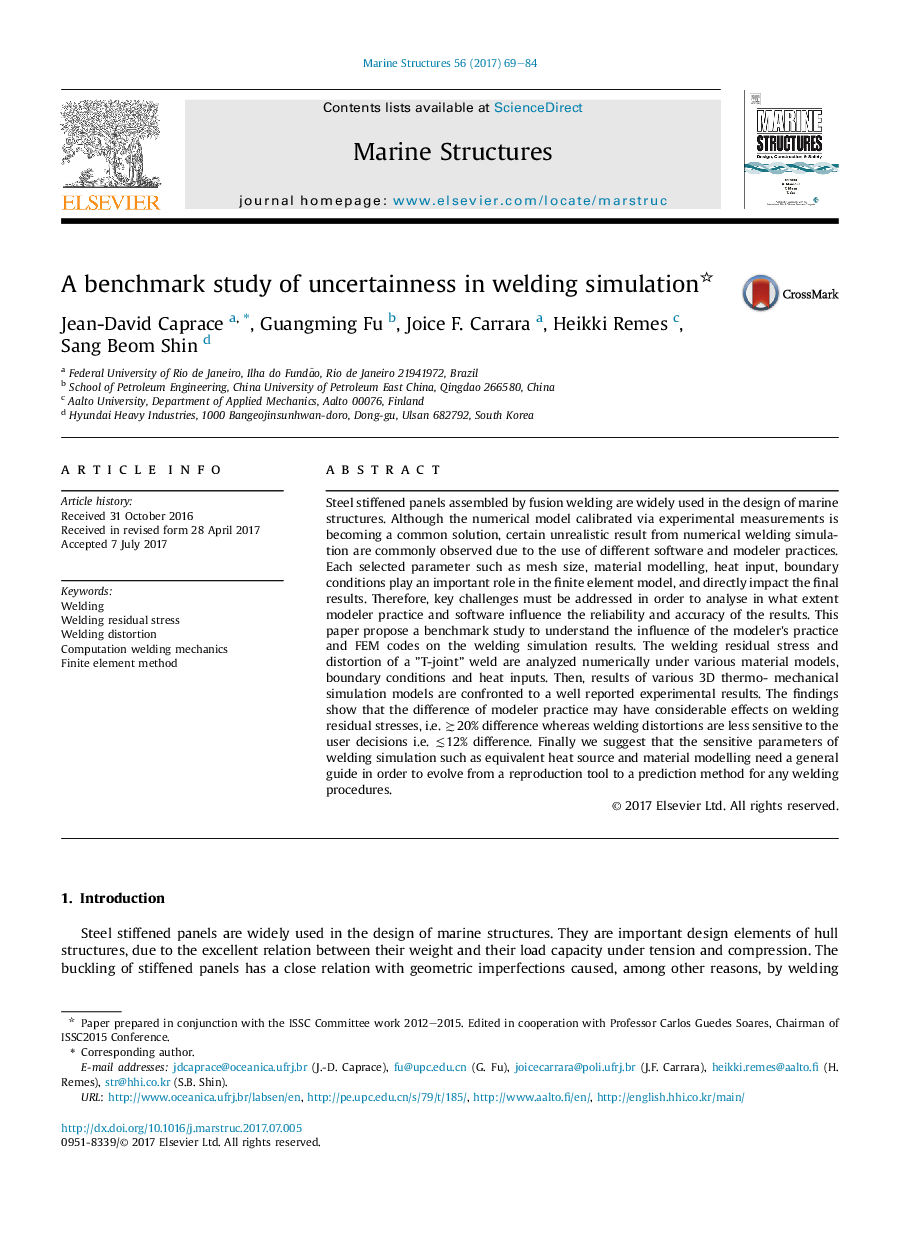| Article ID | Journal | Published Year | Pages | File Type |
|---|---|---|---|---|
| 4925006 | Marine Structures | 2017 | 16 Pages |
Abstract
Steel stiffened panels assembled by fusion welding are widely used in the design of marine structures. Although the numerical model calibrated via experimental measurements is becoming a common solution, certain unrealistic result from numerical welding simulation are commonly observed due to the use of different software and modeler practices. Each selected parameter such as mesh size, material modelling, heat input, boundary conditions play an important role in the finite element model, and directly impact the final results. Therefore, key challenges must be addressed in order to analyse in what extent modeler practice and software influence the reliability and accuracy of the results. This paper propose a benchmark study to understand the influence of the modeler's practice and FEM codes on the welding simulation results. The welding residual stress and distortion of a ”T-joint” weld are analyzed numerically under various material models, boundary conditions and heat inputs. Then, results of various 3D thermo- mechanical simulation models are confronted to a well reported experimental results. The findings show that the difference of modeler practice may have considerable effects on welding residual stresses, i.e. â³20% difference whereas welding distortions are less sensitive to the user decisions i.e. â²12% difference. Finally we suggest that the sensitive parameters of welding simulation such as equivalent heat source and material modelling need a general guide in order to evolve from a reproduction tool to a prediction method for any welding procedures.
Related Topics
Physical Sciences and Engineering
Engineering
Civil and Structural Engineering
Authors
Jean-David Caprace, Guangming Fu, Joice F. Carrara, Heikki Remes, Sang Beom Shin,
